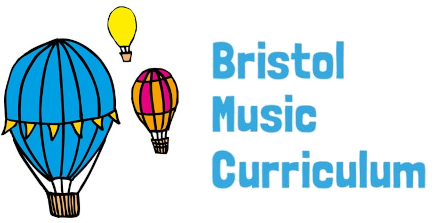Early Learning Goals: To identify different un-tuned percussion instruments by their sounds. To be able to name a selection of un-tuned percussion instruments and be able to play them in an appropriate way. Starter activity: Watch the ‘Creepy Crawly Calypso’, revisiting the different instruments used in each of the verses and reminding the children what […]
Tag: timbre
Year 6, Unit 3: Chronology – Lesson 5
Key Learning Objectives: To identify a number of features of 20th century/modern music. To compare features of music from two different historical periods. Starter activity: Introduce the pupils to modern/20th century music, using the provided Classic FM video. Discuss how this genre is seen to be a ‘break from the past’, highlighting key features and styles […]
Year 6, Unit 3: Chronology – Lesson 3
Key Learning Objectives: To identify the key features of the Romantic music. To compare music from the same era and identify similarities. To explain how music can create a mood in terms of instruments, dynamics and texture. Starter activity: Introduce the music of the Romantic Period to the pupils by playing ‘Dance of the Knights’ by […]
Year 4, Unit 3: Chronology – Lesson 6
Key Learning Objectives: To explore minimalism through a variety of media, manipulating sounds and media. To compose / notate / perform a minimalist composition. Starter activity: Listening and response exercise, based on the work ‘Changes’ by the contemporary Bristol composer John Pitts. Create a shifting pattern of actions, choosing five actions, repeating them until a good […]
Year 4, Unit 3: Chronology – Lesson 4
Key Learning Objectives: To respond creatively to a piece of music. To suggest words to describe the mood of a piece of music, considering how the composer may have wanted the listener to feel. To identify instruments and to consider how their timbre suggests tone colours. Listening focus: Listening and response exercise, based on the […]
Year 4, Unit 3: Chronology – Lesson 1
Key Learning Objectives: To learn about Renaissance instruments and to identify the differences and similarities to instruments today. To understand a piece of music is often written for a purpose and consider where it may have been performed. To listen carefully to a piece of music and use drama to respond creatively to it. […]
Year 4, Unit 1: Water – Lesson 4
Key Learning Objective: To interpret symbols as musical sounds. Additional Learning Objective: To select instruments and explore the timbre of the instruments in order to represent aspects of a storm. Starter activity: Watch the BBC Ten Pieces film for Benjamin Britten’s ‘The Storm’ from the opera ‘Peter Grimes’. Explain that the class will be using it […]
Year 3, Unit 2: Junk Percussion – Lesson 5
Key Learning Objectives: To explore timbre using everyday items as instruments. To listen to and repeat a variety of rhythms using instruments. Starter activity: Select an activity from the Rhythm Starter Bank. Main activity: Watch the provided videos from ‘Stomp’ the musical and discuss unusual aspects of the performance, focusing on choice of instrumentation and […]
Reception, Unit 3, Calypso – Lesson 1
Early Learning Goals: To sort metal and non-metal instruments into two groups. To participate in singing and dancing as part of a group. To understand that music might start in one part of the world and travel to another where it is equally enjoyed. Starter activity: Class activity – create two baskets of instruments sorted […]
Year 3, Unit 1: Air – Lesson 1
Key Learning Objective: To explore and understand timbre. Additional Learning Objective: To contribute to creating a soundscape of a hot air balloon preparing to take flight and lifting off the ground. Starter activity: Explore the Bristol Balloon Fiesta, listen to Lin Marsh’s ‘Hot Air Balloon Song’, learning part one of the refrain. Main activity: Create a whole […]
